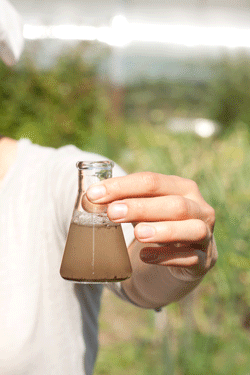The purpose of drilling a groundwater monitoring well is to provide a place where someone can obtain samples of groundwater. Sampling a well is not difficult. However, it is important to take the samples in a certain way to ensure they are not contaminated.
What Tools Do You Need To Take Groundwater Well Samples?
You will need something to determine the water level and depth of your well. The two most common tools for this are a long measuring tape or an electronic water level meter.
You will also need something to purge the well before sampling. A bailer is one option. It is typically a 2 to 3-inch PVC pipe with a check valve on the bottom. The other option is a submersible pump.
Other tools needed for sampling include sample containers, a bucket, gloves, pen, paper, calculator, a site map and a cooler with ice.
How Does Sampling Happen?
All equipment needs to be clean before sampling to prevent contamination.
What Tools Do You Need To Take Groundwater Well Samples?
You will need something to determine the water level and depth of your well. The two most common tools for this are a long measuring tape or an electronic water level meter.
You will also need something to purge the well before sampling. A bailer is one option. It is typically a 2 to 3-inch PVC pipe with a check valve on the bottom. The other option is a submersible pump.
Other tools needed for sampling include sample containers, a bucket, gloves, pen, paper, calculator, a site map and a cooler with ice.
How Does Sampling Happen?
All equipment needs to be clean before sampling to prevent contamination.
- Label the sampling containers, including all information required by lab.
- Set up all the equipment next to the well on a clean plastic sheet to prevent accidental contamination.
- Calculate the volume of water in the well. You do this by taking three measurements: the depth to the top of the water, the depth to the bottom of the well, and the diameter of the well. Subtract the depth to water from the depth to bottom. This is the depth of water in the well. By the diameter of the pipe, figure out how many gallons are in a single linear foot. By multiplying the gallons of water in a linear foot, by the number of linear feet, you can determine the volume of water in the well.
- To take a good sample, you need to purge the well of standing water. The volume to remove is three times the volume of the water in the well. So, if you calculate 20 gallons of water in the well, you will need to purge three times that, or 60 gallons. Use the bailer or the submersible pump to purge.
- Once you finish purging the well, take the sample. Use the bailer or submersible pump to fill the sampling container. Mark the time on the sample. Preserve it according to lab instructions.
- Close up the well.
- Send samples to the lab and report to the appropriate authorities.
- Dispose of the purge water according to local or state regulations.
Sampling monitoring wells is only one of the many environmental services that we provide at Talon/LPE. Contact us today to find out more.


